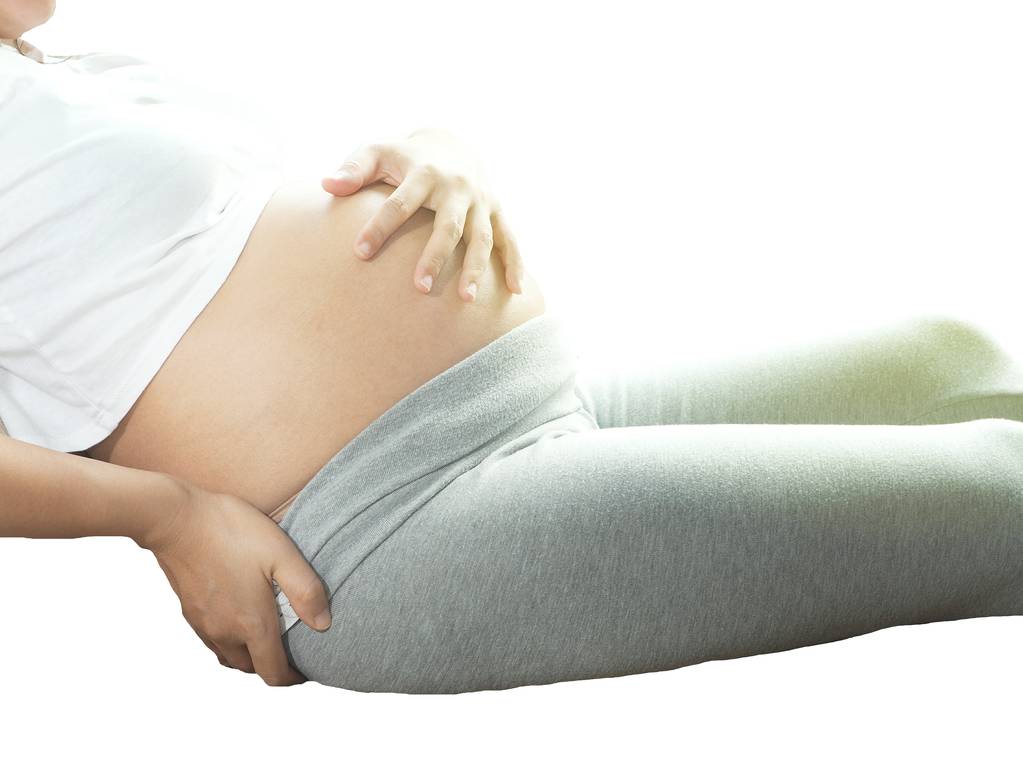Learn how to differentiate between back labor and kidney or urinary tract infections.
How Can I Be Sure It’s Back Labor and Not a Kidney or Urinary Tract Infection?
Are you experiencing a sharp pain in your back? Don’t panic just yet, it may not necessarily be a kidney or urinary tract infection. Back labor, a common phenomenon during pregnancy, can sometimes mimic the symptoms of these infections. Let’s dive into the basics of back labor and learn how to distinguish it from other ailments.

Understanding the Basics of Back Labor
What exactly is back labor, you might wonder? Well, let me enlighten you! Back labor occurs when the intense pain associated with contractions is predominantly felt in the lower back, instead of the abdomen. This can make it confusing to determine if it’s back labor or something else.
What is Back Labor?
Back labor refers to the sensation of severe back pain experienced during labor, particularly in the later stages. Instead of the typical contraction pain felt in the front of the body, back labor discomfort is concentrated in the lower back.
During back labor, the muscles and ligaments in the lower back are under immense pressure as the baby moves down the birth canal. This pressure can cause intense pain and discomfort, making it challenging for the mother to find relief.
It’s important to note that back labor is not experienced by all women during childbirth. Some women may have a more traditional labor experience with pain concentrated in the abdomen, while others may experience a combination of both abdominal and back pain.
Common Symptoms of Back Labor
When it comes to back labor, there are several telltale signs to keep an eye out for. These include intense lower back pain that increases during contractions, pain relief when leaning forward or applying pressure to the back, and the absence of discomfort in the abdominal area.
One of the key symptoms of back labor is the location of the pain. Unlike regular contractions, where the pain is felt in the front of the body, back labor pain is concentrated in the lower back. This can make it challenging for women to differentiate between back labor and other types of pain.
Another common symptom of back labor is the relief experienced when leaning forward or applying pressure to the back. This can be achieved through various positions, such as kneeling, hands and knees, or leaning over a birthing ball. The pressure applied to the lower back helps alleviate some of the discomfort and provides temporary relief.
Additionally, women experiencing back labor may notice that they do not feel the same level of discomfort in the abdominal area. While contractions may still be present, the pain is primarily concentrated in the lower back. This distinction can help healthcare providers determine if a woman is experiencing back labor or a different type of labor altogether.
It’s important for expectant mothers to be aware of the symptoms of back labor and communicate any concerns or questions with their healthcare provider. Understanding the basics of back labor can help women prepare for the possibility and explore different pain management techniques to ensure a smoother labor experience.
Distinguishing Back Labor from Kidney Infections
While back labor may seem similar to kidney infections, there are ways to tell them apart. Let’s explore the symptoms associated with kidney infections and how they differ from back labor.
Identifying Kidney Infection Symptoms
When dealing with kidney infections, the symptoms tend to be more than just back pain. Keep an eye out for additional indicators like fever, frequent urination, burning sensation while urinating, and cloudy or foul-smelling urine.
Kidney infections, also known as pyelonephritis, are a type of urinary tract infection that affects the kidneys. They occur when bacteria enter the urinary tract and travel up to the kidneys. In addition to back pain, which is often felt on one side of the lower back, kidney infection symptoms can include abdominal pain, nausea, and vomiting. These symptoms may be accompanied by a general feeling of fatigue and malaise.
Fever is a common symptom of kidney infections and can range from mild to high-grade. It is important to note that not everyone with a kidney infection will experience a fever, but it is a common sign to look out for. The presence of a fever, especially if it is accompanied by chills and sweating, can indicate a more severe infection that requires immediate medical attention.
In addition to fever, frequent urination is another symptom of kidney infections. This occurs because the body tries to flush out the bacteria causing the infection. However, unlike a urinary tract infection, where frequent urination is often accompanied by a strong urge to urinate, kidney infection-related frequent urination may not be associated with a strong urge.
Burning sensation while urinating is another symptom that can help differentiate kidney infections from back labor. This symptom, known as dysuria, is caused by the inflammation of the urinary tract due to the infection. It can cause discomfort and pain during urination.
Cloudy or foul-smelling urine is another telltale sign of a kidney infection. The presence of bacteria and pus in the urine can give it a cloudy appearance, and the infection itself can cause an unpleasant odor. If you notice any changes in the color or smell of your urine, it is important to seek medical attention.
How Kidney Infections are Diagnosed
If you suspect a kidney infection, seeking medical advice is crucial. Doctors typically conduct urine tests and may even order imaging tests like ultrasounds or CT scans to confirm the diagnosis. Remember, prompt medical attention is essential in treating kidney infections.
When you visit a healthcare professional with symptoms suggestive of a kidney infection, they will likely start by taking a detailed medical history and asking about your symptoms. This information will help guide the diagnostic process.
Urine tests are commonly used to diagnose kidney infections. A sample of your urine will be collected and sent to a laboratory for analysis. The laboratory will look for the presence of bacteria, white blood cells, and red blood cells in the urine. These findings, along with your symptoms, can help confirm the diagnosis of a kidney infection.
In some cases, imaging tests like ultrasounds or CT scans may be ordered to further evaluate the kidneys and urinary tract. These tests can provide detailed images of the kidneys, allowing the healthcare professional to identify any abnormalities or signs of infection.
It is important to note that kidney infections can be serious and may require hospitalization, especially if the infection is severe or if you have underlying health conditions. Treatment typically involves a course of antibiotics to eradicate the infection, along with measures to manage pain and fever.
In conclusion, while back labor and kidney infections may share some similarities in terms of back pain, there are distinct differences in symptoms and diagnostic approaches. Understanding these differences can help individuals seek appropriate medical attention and receive timely treatment for their condition.
Differentiating Back Labor from Urinary Tract Infections
Urinary tract infections (UTIs) can also cause back pain, but there are ways to distinguish them from back labor. Let’s explore the symptoms associated with UTIs and how they differ from back labor.
Recognizing Urinary Tract Infection Symptoms
When it comes to UTIs, additional symptoms may manifest alongside back pain. Look out for feelings of urgency to urinate, pain or discomfort during urination, frequent urination, and the presence of blood in the urine.
It is important to note that UTIs can affect individuals of all ages and genders. The symptoms mentioned above can vary in intensity and may be accompanied by a general feeling of malaise and fatigue. In some cases, individuals may experience lower abdominal pain or pressure, as well as a low-grade fever.
Furthermore, the severity of back pain caused by a UTI can differ from person to person. Some individuals may experience mild discomfort, while others may have intense pain that radiates to the lower back. It is crucial to pay attention to these symptoms and seek medical attention if they persist or worsen.
Diagnosis Process for Urinary Tract Infections
If you suspect a UTI, it’s important to consult a healthcare professional. They will perform various tests, including a urine culture, to confirm the diagnosis. Antibiotics are commonly prescribed to treat UTIs, highlighting the significance of proper medical care.
During the diagnosis process, healthcare professionals may also inquire about the individual’s medical history, including any previous UTIs or kidney-related issues. This information helps in determining the appropriate treatment plan and preventing future infections.
It is worth mentioning that self-diagnosis and self-medication are not recommended when it comes to UTIs. Proper medical evaluation is essential to ensure accurate diagnosis and appropriate treatment. Delaying or avoiding medical care can lead to complications and the spread of infection to the kidneys, which can be more serious and require more aggressive treatment.
Once diagnosed, healthcare professionals will prescribe a course of antibiotics tailored to the specific UTI strain. It is crucial to complete the full course of antibiotics as prescribed, even if symptoms improve before the medication is finished. This helps to ensure the complete eradication of the infection and prevent recurrence.
In addition to antibiotics, healthcare professionals may also recommend lifestyle modifications, such as increased fluid intake and proper hygiene practices, to help prevent future UTIs. These measures can play a significant role in maintaining urinary tract health and reducing the risk of recurrent infections.
The Role of Medical Consultation
Even if you’re confident it’s back labor and not an infection, it’s still crucial to seek medical advice. Let’s explore why timely consultation with a healthcare professional is imperative in such scenarios.

Importance of Timely Medical Advice
Seeking medical advice promptly allows healthcare professionals to provide appropriate guidance and interventions. They can help alleviate any concerns, provide pain management strategies, and ensure the well-being of both you and your baby.
How Doctors Differentiate Between These Conditions
Medical experts have specialized knowledge and tools to differentiate between back labor and kidney or urinary tract infections. Through a careful examination of symptoms, medical history, and diagnostic tests, doctors can provide an accurate diagnosis and recommend suitable treatment options.
Prevention and Management Strategies
Now that we’ve discussed differentiating between back labor and infections, let’s explore some prevention and management strategies to keep you comfortable throughout your pregnancy.
Preventing Kidney and Urinary Tract Infections
Prevention is always better than cure! To reduce the risk of kidney and urinary tract infections, it’s crucial to stay hydrated, maintain good personal hygiene, and empty your bladder regularly. Additionally, consulting with your healthcare provider and following their guidance is essential.
Managing Back Labor Pain Effectively
Coping with back labor pain can be challenging, but fear not, there are ways to manage it effectively. Explore options like massage, warm baths, relaxation techniques, and different positions during labor. Remember, every pregnancy is unique, so find what works best for you!
In conclusion, back labor can mimic the symptoms of kidney or urinary tract infections, causing confusion and concern. By understanding the basics of back labor and differentiating it from other ailments, seeking timely medical consultation, and employing prevention and management strategies, you can navigate through your pregnancy journey with confidence and comfort.



